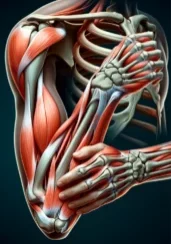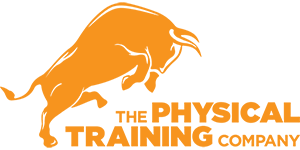The 7 Best Tennis Elbow Exercises For Pain Relief

Tennis elbow, or lateral epicondylitis, is a common condition that causes pain around the outside of the elbow, often due to overuse. Although frequently associated with playing tennis, it can affect anyone who engages in activities that put repetitive stress on the elbow joint and forearm muscles.
This condition can significantly impact mobility and overall health, making even simple arm movements painful and challenging. The key to effectively treating tennis elbow lies in understanding its causes, symptoms, and the therapeutic exercise programs that can aid in the healing process.
FURTHER READING AND RESEARCH
This condition can significantly impact mobility and overall health, making even simple arm movements painful and challenging. The key to effectively treating tennis elbow lies in understanding its causes, symptoms, and the therapeutic exercise programs that can aid in the healing process.
The pain of tennis elbow typically originates from the overuse of the muscles and tendons of the forearm, especially those that attach to the lateral epicondyle – the bony bump on the outside of the elbow. People who perform repetitive movements, such as gripping a tennis racket, turning a wrench, or even extensive computer work, may find themselves experiencing the typical symptoms of tennis elbow.
These symptoms can include a weakening grip strength, pain when lifting or bending the arm, and discomfort when writing or turning a doorknob. The condition underscores the delicate balance required to maintain joint health and emphasizes the importance of preventive and rehabilitative exercises.
To address and reduce the pain associated with tennis elbow, an effective exercise program, often designed by a physical or occupational therapist, is crucial. This program usually includes a variety of tennis elbow exercises aimed at restoring function to the elbow and forearm. Some of the best exercises for tennis elbow include wrist stretches, towel twists, forearm holds, and gentle wrist and arm movements.
For instance, slowly bending the wrist upwards while keeping the arm straight, or gently rotating the wrist with a small ball or light weight in hand, can help strengthen the muscles and tendons around the elbow joint.
Other exercises, like the towel twist or using a rubber band for resistance, can improve grip strength and flexibility. It's essential to start these new exercises gradually and increase intensity based on pain levels and guidance from a therapist to ensure the injured tendon heals correctly and effectively.
Understanding Lateral Epicondylitis
Lateral epicondylitis, commonly known as tennis elbow, is a painful condition affecting the elbow and forearm. This ailment is not limited to tennis players and racquet sports aficionados, despite its name suggesting otherwise.
Lateral epicondylitis is characterized by pain and tenderness on the outside of the elbow, specifically where the tendons of the forearm muscles attach to the bony prominence called the lateral epicondyle.
The Cause: Generally An Overuse Injury
The root cause of lateral epicondylitis is typically repetitive stress and strain on the forearm muscles and tendons.
This overuse leads to microtears in the tendons that attach to the lateral epicondyle, causing pain and inflammation.
Activities that can lead to this condition include racquet sports, weight pulling, and other tasks that involve repetitive arm and wrist movements.
Over time, these repetitive actions can overload the tendons, particularly in situations where the activities are performed with poor technique or inadequate equipment, such as a tennis racket that doesn’t suit the player's needs.
The resulting overuse injury manifests as pain and weakened grip strength, making everyday activities like shaking hands or lifting objects challenging and uncomfortable.
Symptoms of Tennis Elbow
The primary symptom of tennis elbow is a pain that radiates from the outside of the elbow into the forearm and wrist. It’s often experienced when engaging in activities that involve lifting, gripping, or twisting. Common indications include:
- A pain that worsens with forearm activity, such as holding a racquet, turning a wrench, or gripping an object.
- Stiffness in the elbow, particularly in the morning or after periods of inactivity.
- Weakness in the forearm, making it difficult to perform simple tasks like opening a jar or holding a cup.
- A painful grip while shaking hands or squeezing objects.
Medial Epicondylitis: A Related Condition
While lateral epicondylitis affects the outer elbow, medial epicondylitis, also known as golfer’s elbow, impacts the inner elbow.
This condition is similar to tennis elbow but involves pain and inflammation on the inside of the elbow, where tendons attach to the medial epicondyle.
Like lateral epicondylitis, it's also caused by overuse and repetitive motions, but it primarily affects the tendons connected to the muscles that flex the wrist and fingers.
Treating Tennis Elbow
Treatment for tennis elbow aims to reduce pain and restore function to the affected arm. A physical therapist can guide patients through a series of strengthening exercises tailored to rehabilitate the forearm muscles and tendons.
These exercises are crucial in the healing process, aiding in rebuilding strength and flexibility. Additionally, therapy may involve techniques to relieve tension in the muscles and improve blood flow to the area, facilitating the body's natural healing process.
Whilst the exercises below are exercises for tennis elbow, it is always recommended to see a qualified medical practitioner or physical therapist to get properly assessed by a professional before embarking on any exercise program, stretches or strengthening exercises.
How Long Does Tennis Elbow Last?
The duration of tennis elbow pain can vary significantly based on the severity of the condition and the effectiveness of the treatment approach. On average, most individuals begin to experience relief within a few weeks to a few months of starting a therapeutic exercise program. However, in some cases, complete recovery from tennis elbow may take up to a year or longer.
Factors affecting length of Recovery Time
Recovery time from tennis elbow, medically known as lateral epicondylitis, can be influenced by several key factors. Understanding these elements is crucial for managing expectations and optimizing the healing process.
Severity of the Injury
The intensity of the injury plays a pivotal role in recovery time. Mild cases of tennis elbow may resolve quicker, often within weeks to a few months, whereas more severe injuries, involving significant tendon damage, may require a longer duration for complete healing.
Age and Overall Health
Older individuals or those with underlying health conditions may experience a slower recovery. Age-related decrease in tissue elasticity and the body's natural healing capacity can extend the rehabilitation period.
Treatment Adherence
Strict adherence to a therapeutic exercise program and following the guidance of a physical therapist are vital. Deviating from prescribed exercises or overexerting the injured arm can delay recovery.
Activity Level and Occupational Factors
Individuals engaged in activities or occupations involving repetitive arm and wrist motions, like playing racquet sports or manual labor, may have prolonged recovery times. Continuously engaging in activities that strain the forearm can exacerbate the injury and hinder the healing process.
Lifestyle and Habits
Lifestyle factors, such as smoking or poor nutrition, can impede the body's natural repair mechanisms. A healthy lifestyle supports faster tissue repair and can reduce recovery time.
Rehabilitation Techniques
The types of rehabilitation techniques used, including physical therapy, exercises, and possibly the use of supportive devices, significantly affect recovery. Advanced therapeutic methods and consistent, gentle exercises designed to restore function and reduce pain can expedite healing.
Early Intervention
Timely diagnosis and treatment commencement are crucial. Early intervention can prevent the condition from worsening, thereby shortening the recovery timeline.
Exercise 1 - Fist clench
Important for enhancing grip strength, Fist Clench involves keeping the palm facing upwards, the forearm supported, and shoulders relaxed. This exercise helps in stabilizing the upper arm muscles, crucial for those suffering from tennis elbow.
Exercise 2 - Wrist turn with weight
This exercise involves turning the wrist with a light weight, first in one direction and then in the reverse. It engages the lower arm and opposite hand, promoting strength and flexibility in the wrist and elbow. The slow, deliberate movements aid in recovery, especially when performed standing with one foot forward for balance.
Exercise 3 - Supination with a dumbbell
Supination with a dumbbell focuses on rotating the palm facing up while gently pulling the weight. This exercise targets the upper arms and is essential in physical therapy for tennis elbow, helping to replicate the same motions involved in daily activities without inducing pain.
Exercise 4 - Elbow Flexion
Elbow Flexion involves moving the arm from a starting position to opposite directions. It's a key component of rehab for tennis elbow as it works on the muscles and tendons affected by the condition, ensuring the palm facing up during the exercise for effective treatment.
Exercise 5 - Wrist Flexion
A crucial part of tennis elbow rehab, Wrist Flexion involves slowly bending the wrist from a starting position. This exercise helps fix tennis elbow by strengthening the forearm hold, promoting recovery and pain relief.
Exercise 6 - Wrist Extension
This exercise involves turning the wrist with a light weight, first in one direction and then in the reverse. It engages the lower arm and opposite hand, promoting strength and flexibility in the wrist and elbow. The slow, deliberate movements aid in recovery, especially when performed standing with one foot forward for balance.
Exercise 7 - Towel twist
This exercise utilizes a rolled-up towel. Participants slowly turn the towel in one direction, then reverse, performing towel twists to enhance forearm strength. It's an effective part of tennis elbow rehab, targeting the specific muscles and tendons affected by the condition.

